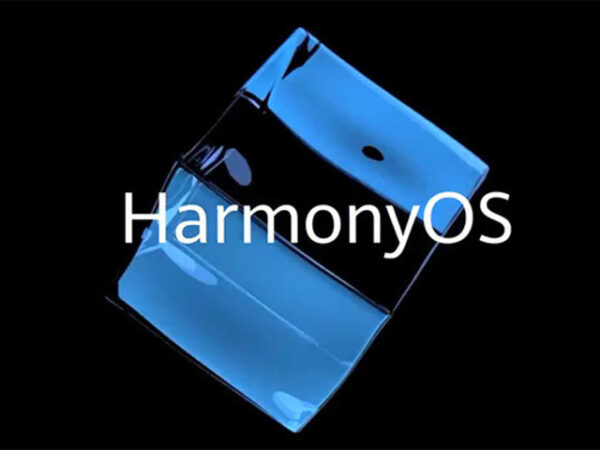After Google’s restriction on Huawei smartphones from operating Android OS, there were numerous speculations about Huawei’s next move. The strongest one being the launch of its own operating system. After lots of ifs and buts, things now have become clear as Huawei announced launching its own operating system ‘HarmonyOS’.
At the recent Huawei Developer Conference (HDC) 2019, Richard Yu, Huawei CEO Consumer Business Group, unveiled the new operating system for smart devices. As stated in the company’s press release, through Harmony, Huawei aims at developing an integrated and secure environment.
Through this implementation, Huawei aims to establish an integrated and shared ecosystem across devices, create a secure and reliable runtime environment, and deliver a holistic intelligent experience across every interaction with every device.
Notable Features Of HarmonyOS
As explained by Yu, HarmonyOS is a microkernel-based distributed OS that will seamlessly support all types of smart devices. For now, the operating system aims at IoT based products, such as Smart TVs, cars, and wearables, it will soon support smartphones as well.
The company boasts Harmony as a ‘light-weight’ system. It bears numerous striking features that supposedly give it an edge over the present operating systems. Here we list out the prominent features of this OS.
Faster And Safer
In comparison to Google Fuchsia – a similar microkernel-based non-distributed open-source platform currently under development by Google, and QNX – a Unix-like RTOS by BlackBerry, Yu claims HarmonyOS offers faster and better performance.
#Huawei says that #HarmonyOS’ IPC performance is five times that of Google’s Fuchsia, and three times that of QNX. That’s fast, very fast! #HuaweiFacts
— Huawei Facts (@HuaweiFacts) August 9, 2019
Besides, owing to its ‘lesser code’ as compared to Android, the probabilities of attack are low, making the new OS safer. Also, it will offer safety across multiple devices due to ‘verified TEE’.
For the first time, #HarmonyOS will have a verified TEE (Trusted Execution Environment). Improving connected security across multiple smart devices in a connected all-scenario world #HDC2019 pic.twitter.com/o1TF54Hjkc
— Huawei Mobile (@HuaweiMobile) August 9, 2019
Better UI
Huawei claims that the new OS will have less latency due to a ‘deterministic latency engine’.
#HarmonyOS is built with a deterministic latency engine that gives a smooth interactive experience. That means latency is at a minimum; bringing fluid interactive experience to the maximum #HDC2019 pic.twitter.com/p9bnwNHJq6
— Huawei Mobile (@HuaweiMobile) August 9, 2019
Cross-Platform And Cross-Device Support
Unlike iOS and Android, Harmony offers seamless compatibility across multiple devices and platforms.
A modularized #HarmonyOS can be nested to adapt flexibly to any device to create a seamless cross-device experience. Developed via the distributed capability kit, it builds the foundation of a shared developer ecosystem #HDC2019 pic.twitter.com/2TD9cgtdG8
— Huawei Mobile (@HuaweiMobile) August 9, 2019
This will particularly facilitate app developers. As Yu said,
You can develop your apps once, then flexibly deploy them across a range of devices.
Open-Source
The most tempting feature of Huawei’s OS is that it will be open-source.
HarmonyOS Will Replace Android ‘At Any Time’
Though, the rumors regarding the development of an in-house operating system by Huawei were there since 2012. However, things weren’t clear until recently when Google banned Huawei from using Android under the Presidential order. Later, we witnessed 90-day ease in restrictions from the US to let the firms figure out long-term solutions. Nonetheless, the increasingly developing tensions between the US and China forced Huawei to expedite their work on the new operating system.
Eventually, the firm has finally unveiled its very own operating system to the world. Fortunately for the firm, they could finish up their work and made the announcement at the same time when the US released an early posting of a rule effective from August 13, 2019.
According to Yu, the company prefers to continue supporting Android on its products. Nonetheless, to tackle any sort of chaotic situation in future, the HarmonyOS is all set to replace Android ‘at any time’. The company is confident that shifting to Harmony from Android will only take a couple of days.
At the moment, Harmony does not support Android apps. However, it won’t require much effort from the developers to make small changes in their apps to comply with Harmony.
The company hints about its release in the coming months, possibly between October and December. Consequently, people might be able to experience the new operating system in one of the upcoming Huawei phones.
For now, the firm has released the HarmonyOS as part of Honor Vision Smart TV – a product from their sister brand Honor.
Today we launched the #HONORVision smart screen in China, the first device that runs #HarmonyOS.
HONOR Vision is not only a home entertainment system, but also an information sharing, control management & multi-device interaction center.
RT if you're as excited as we are! pic.twitter.com/fy222UdPxz
— HONOR (@Honorglobal) August 10, 2019
Let us know your thoughts about this news through your comments.

